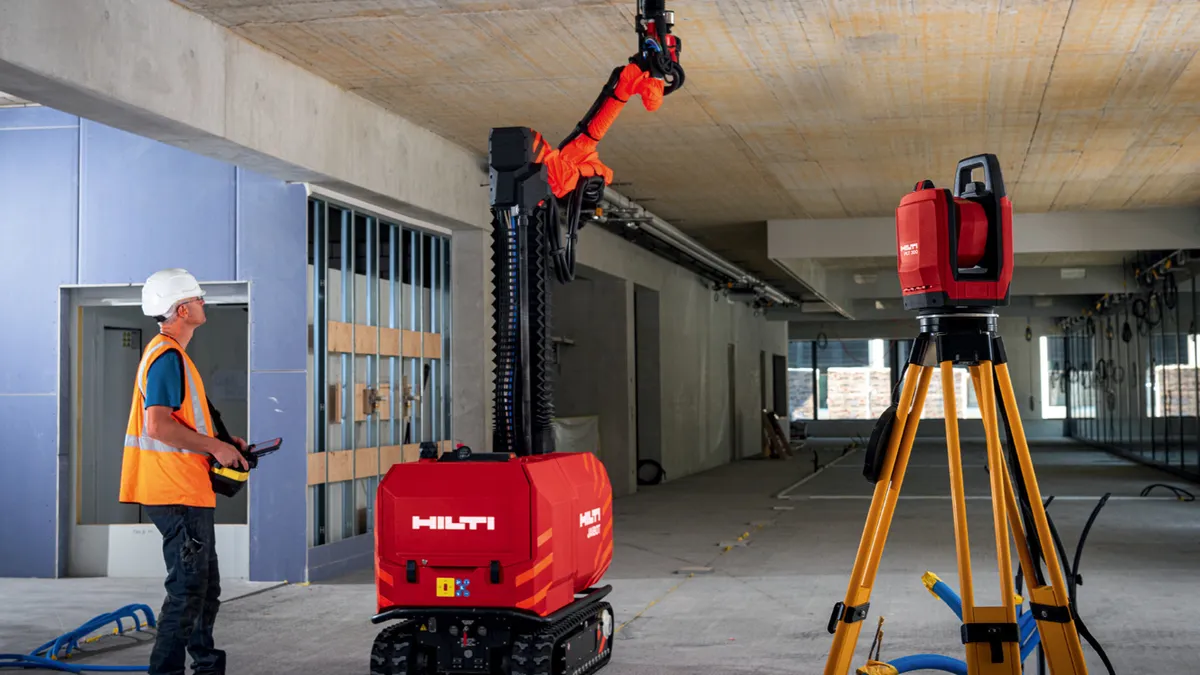Dive Brief:
- Tool and construction software maker Hilti has introduced its first robot, which can perform semi-autonomous mobile ceiling drilling to aid in mechanical, electrical and plumbing work.
- The cordless Jaibot construction robot, which executes its tasks based on BIM data, locates itself accurately indoors, drills holes in a dust-controlled manner and marks them according to corresponding trade, the manufacturer said in a press statement.
- The company is launching the unit in response to the issues facing contractors and subcontractors such as pressure on profit margins, productivity shortfalls and skilled labor shortages, said Hilti Group Executive Board Member Jan Doongaji. "We are further stepping toward realizing the efficiency that digital transformation can and will bring to construction sites," he said.
Dive Insight:
The Jaibot is navigated by a worker via remote control to move from one location to the next and uses reference data from a remote station called the Hilti PLT 300. It is designed to assist tradespeople in physically demanding, repetitive installation tasks such as drilling numerous holes in ceilings.
"We looked at which routine work on the construction site is among the most stressful, and that is primarily overhead work," said Julia Zanona, product manager for robotics at Hilti. "The Jaibot takes over the most strenuous and exhausting tasks, working alongside the installation team."
Because it is BIM-enabled, the robotic system can report daily progress from the field to the project office via cloud computing. In addition, potential schedule and other conflicts between the trades also can be detected at an early stage and then limited, resulting in more projects delivered on time and within budget, the company said.
This summer, the tool maker launched another tech-propelled tool to help contractors alleviate the challenges of the skilled labor shortage. Hilti's first exoskeleton, the EXO-O1, is designed to reduce strain on construction workers.
The wearable’s design reduces strain put on the shoulders, arms and elbows for jobs that require frequent lifting to shoulder level and higher, according to Ed Selz, business unit manager at Hilti North America. The EXO-O1 is designed to be used for indoor work such as hanging drywall, maintenance, interior finishes or other mechanical work. It will be available in the U.S. in January, according to a company spokesperson.
The shrinking number of properly trained and skilled workers in the labor force was a focus during the conception of the exoskeleton, Selz said. Hilti hopes contractors will find value in retaining skilled workers who may be older by reducing the daily strain on their joints during long days, while also finding a new way to appeal to younger, potential workers who may have concerns of overwork.















